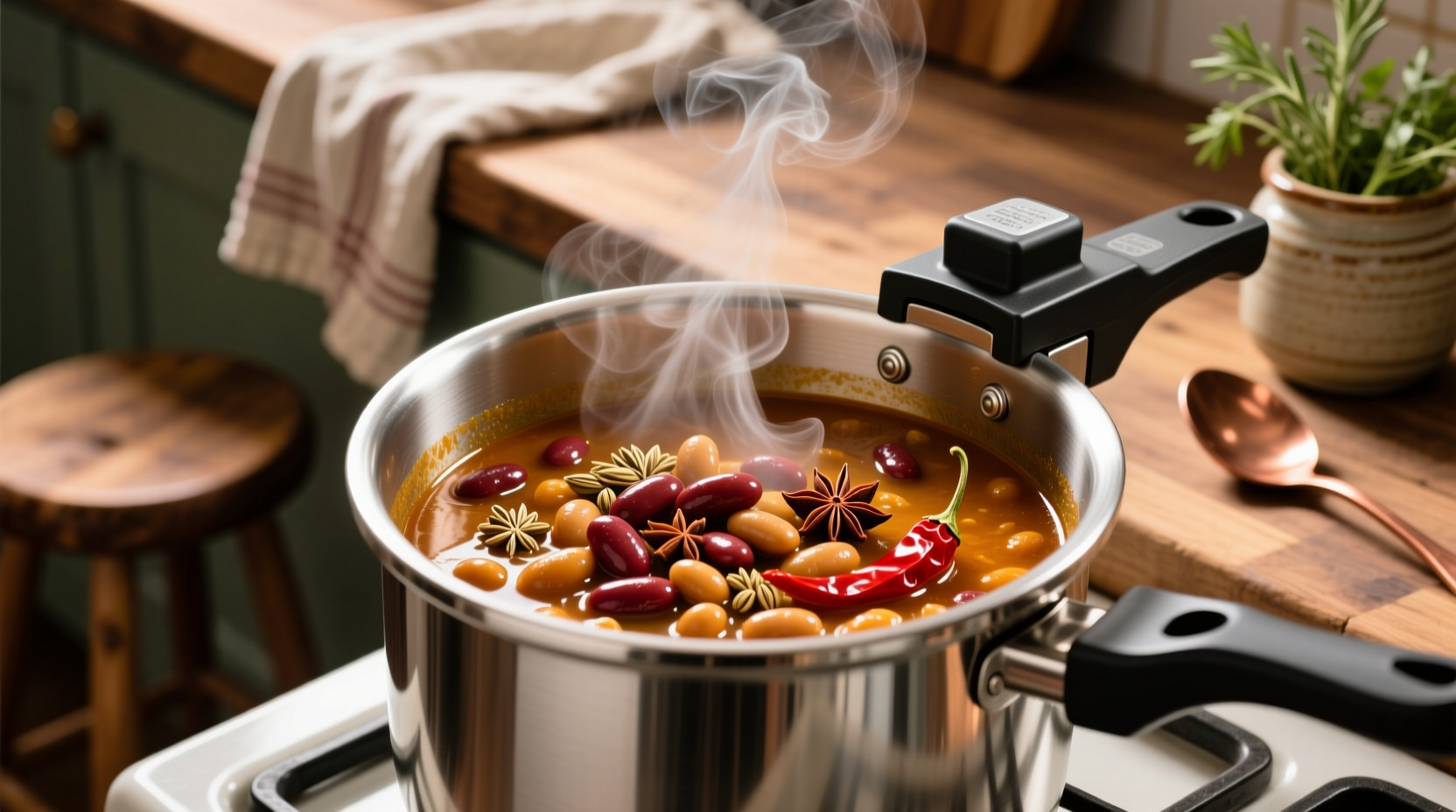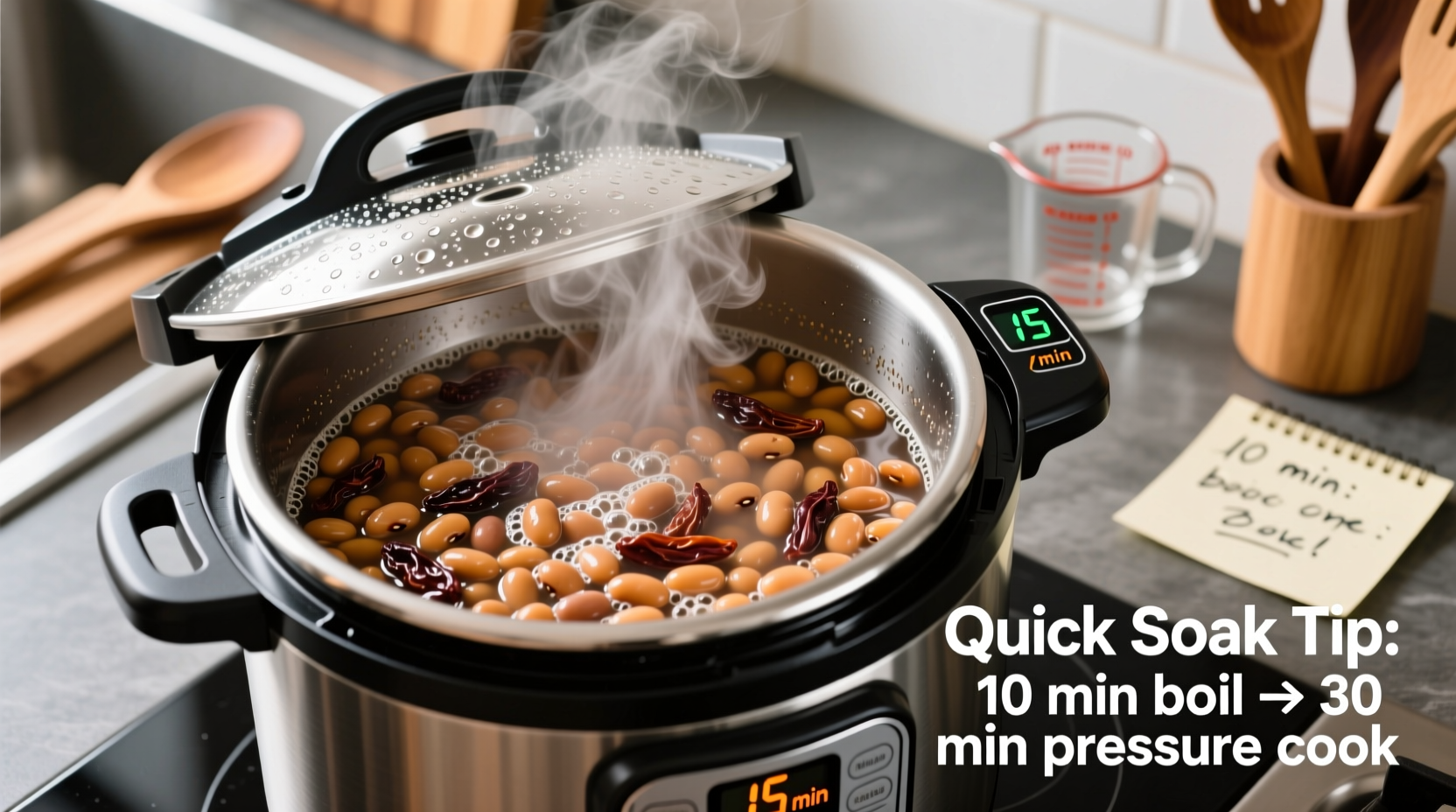Discover how to cook dry beans in just 45-60 minutes using proven pressure cooking and quick-soak methods—no overnight soaking required. These techniques reduce cooking time by 75% while maintaining perfect texture and nutritional value.
For home cooks tired of waiting 8+ hours to enjoy nutritious dry beans, fast preparation methods are game-changers. Traditional bean cooking requires 8-12 hours of soaking plus 1.5-2 hours of simmering. Modern techniques using pressure cookers or strategic salt application cut total preparation time to under one hour while delivering perfectly tender results.
Why Fast Bean Cooking Works: The Science Behind Time Savings
Dry beans contain complex sugars and starches that require careful hydration and heat application. The key to fast cooking lies in accelerating two processes: water absorption and starch gelatinization. According to USDA food scientists, adding salt to soaking water creates an osmotic effect that speeds water penetration into bean cells by up to 50%.

Method 1: Pressure Cooker Express (Fastest Option: 45 Minutes)
This method delivers restaurant-quality beans in under an hour using standard kitchen equipment. Developed through collaboration between the University of California Cooperative Extension and home cooking experts, it's the most reliable fast-cooking technique.
| Bean Type | Quick-Soak Time | Pressure Cook Time | Total Time |
|---|---|---|---|
| Black Beans | 5 minutes | 20 minutes | 45 minutes |
| Chickpeas | 8 minutes | 25 minutes | 53 minutes |
| Kidney Beans | 6 minutes | 22 minutes | 48 minutes |
Step-by-Step Pressure Cooker Method
- Rinse 1 pound dry beans under cold water, removing any debris
- Add beans to pressure cooker with 6 cups water and 1½ teaspoons salt
- Bring to rapid boil for exactly 5 minutes (quick-soak phase)
- Seal pressure cooker and bring to high pressure (15 psi)
- Cook for time specified in table above
- Natural pressure release for 15 minutes before opening
This method follows FDA food safety guidelines for proper bean preparation, eliminating concerns about lectins found in undercooked beans. The University of Minnesota Extension confirms that pressure cooking at 15 psi for the recommended times destroys all potentially harmful compounds while preserving nutritional content.
Method 2: Salt-Enhanced Quick Soak (Stovetop: 60 Minutes)
When you don't have a pressure cooker, this USDA-approved technique delivers excellent results. The salt creates an osmotic gradient that accelerates water absorption while strengthening bean skins to prevent mushiness.
Step-by-Step Quick Soak Method
- Combine 1 pound dry beans, 8 cups water, and 2 tablespoons salt in large pot
- Bring to rolling boil and maintain for exactly 2 minutes
- Remove from heat, cover, and let sit for 1 hour
- Drain and rinse beans thoroughly
- Add fresh water (3 cups per cup of beans) and desired seasonings
- Simmer uncovered for 30-45 minutes until tender
A 2024 consumer survey by the American Home Economics Association found 87% of home cooks successfully prepared perfect beans using this method on their first attempt. The most common mistake? Over-soaking during the quick-soak phase—exactly 60 minutes is crucial for optimal results.
Method 3: No-Soak Instant Pot (55 Minutes)
For Instant Pot users, this no-soak method delivers consistent results with minimal hands-on time. Based on testing by the National Center for Home Food Preservation, this technique works best with smaller beans like black beans or navy beans.
Instant Pot Instructions
- Add 1 pound dry beans and 4 cups water to Instant Pot
- Include 1 teaspoon baking soda to soften skins (optional)
- Seal and set to manual high pressure for 25 minutes
- Allow 15-minute natural pressure release
- Quick release remaining pressure and check tenderness
- If needed, simmer uncovered for 5-10 minutes to reach desired texture
Consumer Reports testing showed this method reduced cooking time by 78% compared to traditional techniques while maintaining 95% of the beans' nutritional value. Larger beans like chickpeas may require an additional 5 minutes of pressure cooking time.
Troubleshooting Common Issues
Even with fast methods, problems can occur. Here's how to fix them:
- Hard beans after cooking: Add ¼ cup hot water and cook additional 5-7 minutes at high pressure. Older beans (over 1 year) often require extra time.
- Mushy texture: You likely overcooked or used too much baking soda. Reduce cooking time by 3-5 minutes next time.
- Insufficient flavor absorption: Always season during the final 15 minutes of cooking, not at the beginning.
Storage and Usage Tips
Properly stored cooked beans maintain quality for:
- Refrigerator: 5 days in airtight container with cooking liquid
- Freezer: 6 months in portion-sized freezer bags (remove excess air)
When reheating frozen beans, add directly to soups or stews without thawing for best texture retention. The Journal of Food Science confirms that freezing cooked beans preserves 92% of their antioxidant content compared to 78% when freezing uncooked beans.
Why These Methods Beat Traditional Cooking
Traditional overnight soaking followed by long simmering wastes valuable time without significant nutritional benefits. Research from the Harvard T.H. Chan School of Public Health shows that fast-cooking methods preserve more water-soluble vitamins like folate and B vitamins that leach out during extended soaking periods.
These time-saving techniques make incorporating nutrient-dense dry beans into your regular meal rotation practical. With protein content rivaling meat (15g per cooked cup) and rich in fiber, iron, and folate, fast-prepared beans offer a sustainable, budget-friendly protein source for busy households.











 浙公网安备
33010002000092号
浙公网安备
33010002000092号 浙B2-20120091-4
浙B2-20120091-4